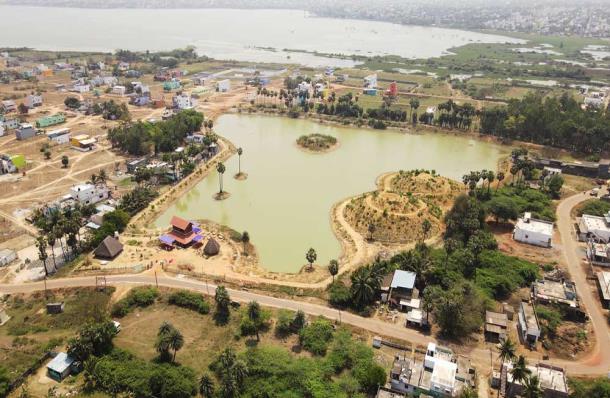The Project Nanneer (which translates to “clean/safe water”), also known as the Naganthagal Eri Restoration Project, is a vital inland freshwater ecosystem restoration project initiated and funded by Tata Communications under their CSR activities and implemented by Pitchandikulam Forest since 8th March 2022.
Location: Upparapalayam village, Pothur Panchayat, Tiruvallur District, Tamil Nadu, India
- Geographical Coordinates: 13°09’25″N latitude, 80°08’22″E longitude
- Geographical Region: Southern part of the Indian subcontinent
- Climate Type: Tropical monsoon climate
- Duration: Ongoing since 8th March 2022
The lake supports diverse aquatic and terrestrial biodiversity, including native and migratory birds, fish, and amphibians, playing a crucial role in regional ecological balance.
- Before restoration, the lake suffered from severe water pollution, eutrophication, and biodiversity loss due to untreated sewage, nutrient overload, invasive species, and urbanization.
- The project aims to reverse these impacts by enhancing biodiversity, improving water quality, and increasing climate resilience through nature-based solutions.
- This document outlines the project’s background, restoration activities, biodiversity gains, ecosystem services, governance, challenges, monitoring, and alignment with global and national policies.
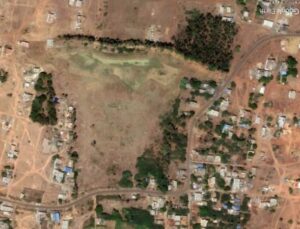
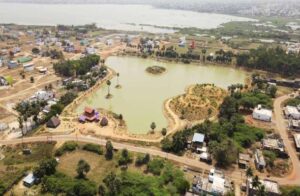
Fig.1: Naganthagal Eri: Before and after Restoration (source: www.pitchandikulamforest.org)
Restoration Activities and Objectives
Project Nanneer focused on reversing ecological degradation caused by silt accumulation, invasive species, and water pollution. Key objectives included biodiversity enhancement, climate resilience, and water quality improvement. Restoration activities included:
- Desilting & Excavation: Removed 24,292 cubic meters of silt from 4 acres to a depth of 1.5 meters; created mounds, islands, and pathways to improve water flow and reduce soil erosion from the embankments and area surrounding the lake.
- Plantation & Habitat Restoration: Planted approximately 5,000 native seedlings managed by local women’s self-help groups; Tata Communications volunteers also participated by planting around 225 seedlings of 45 species.
- Water Quality & Pollution Control: Prevented sewage discharge, implemented phytoremediation with aquatic plants, and enhanced rainwater harvesting and groundwater recharge.
- Wetland Creation & Biodiversity Conservation: Developed wetlands to filter sediments, removed invasive species, and replaced them with native plants; conducted biodiversity monitoring.
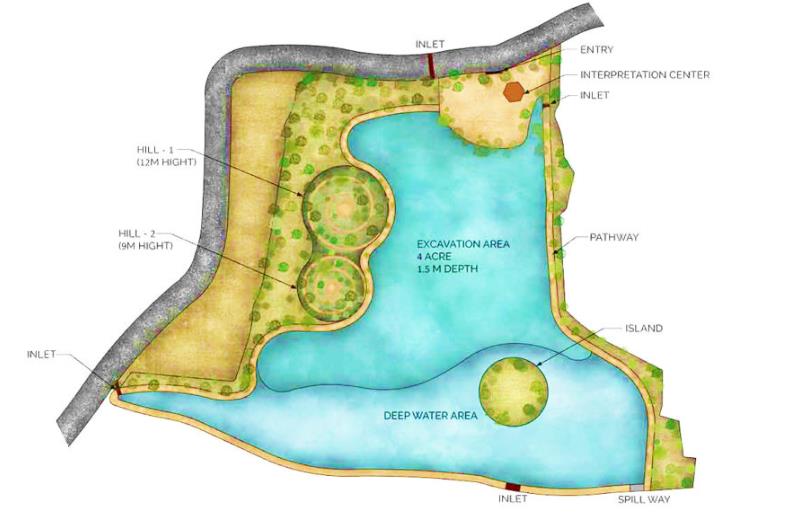
Fig. 2: Restoration plan of Naganthagal Eri (source: www.pitchandikulamforest.org)
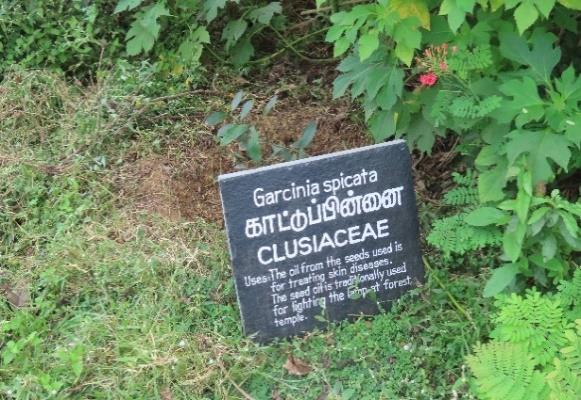
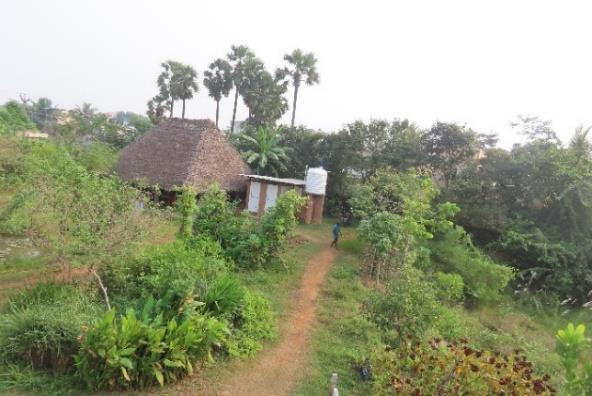
Fig.3. Post restoration plantation around Naganthagal Eri
These efforts align with Nature-based Solution principles, addressing climate adaptation, water management, biodiversity loss, disaster risk reduction, and water security, while also supporting community health and food security indirectly.
Table 1. Different types of societal challenges addressed by Project Nanneer
|
Societal challenges |
Yes/ No |
Comments |
| Climate adaptation & mitigation |
Yes |
Plantation of around 5,000 native plant species and wetland restoration, seed bank initiative and native plant nursery, |
| Water management |
Yes |
Desilting and excavation, rainwater harvesting structure |
| Biodiversity loss |
Yes |
Seed bank initiative, launched through the “Our Village, Our Seed” campaign, for conserving and distributing indigenous plant varieties, native plant nursery, revival of aquatic faunal diversity, removal of invasive species and reintroduction of native varieties |
| Disaster risk |
Yes |
By reducing flood risks and improving drought mitigation
through enhanced water storage capacity |
| Community health |
Not explicitly |
Herbal plant nursery provides medicinal plants for free; however, the usage has not been confirmed.
Presence of total coliform and E. coli in water makes it unfit for direct consumption |
| Food security |
Not explicitly |
Plantation of seasonal medicinal and fruit-bearing plants,
revived fish population |
| Water security |
Yes |
Desilting and excavation have enhanced water retention capacity, ensuring year-round availability for irrigation, drinking, and livestock use, 2,000-liter water storage tank was installed |
Biodiversity Net Gain and Ecosystem Services
The project has significantly enhanced local biodiversity and ecosystem services. Approximately 5,000 native trees and shrubs were planted, enriching habitats for wildlife. A biodiversity survey recorded 198 plant species, including rare and endangered trees like Red Sandalwood. Faunal diversity increased with 143 species documented, including 79 bird species with four near-threatened species, 30 butterfly species, and reptiles such as the Bengal Monitor Lizard.
Restoration created safe nesting and shelter zones through mounds and vegetative islands, supporting birds, reptiles, and small mammals. Ecosystem services improved include:
Table 2. Contribution of Project Nanneer in different types of Ecosystem Services (MEA, 2005)
|
Type of ecosystem services |
Benefits/ Improvements |
| Provisioning Ecosystem Services |
|
|
Regulating Ecosystem Services |
|
|
Cultural Ecosystem Services |
|
|
Supporting Ecosystem Services |
|
All these ecosystem services and the impact of the restoration project on various services has been quantified and mapped through scientific assessments, biodiversity surveys, and structured monitoring efforts. The project team, including experts from Pitchandikulam Forest, has prepared a biodiversity assessment report, Watershed Organisation Trust (WOTR) and WOTR Centre for Resilience Studies (W-CReS) have conducted a comprehensive water quality report and interviews were conducted to capture these domains.
Inclusive Governance and Community Engagement
Inclusive governance is central to the Project’s success, involving corporate sponsors, environmental organizations, government agencies, and local communities. The Pothur Panchayat, with a high Scheduled Caste population, played a key role in planning, implementation, and monitoring. Women’s self-help groups managed nurseries and planted thousands of seedlings, receiving expert training on native species.
The project helped in generating income sources, promoted economic inclusion, and fostered community ownership, ensuring long-term sustainability. Around 12,000 beneficiaries, 60% from marginalized groups, gained from improved water access, equitable resource distribution, biodiversity access through seed banks, and regulated community use of the lake for fishing and recreation.

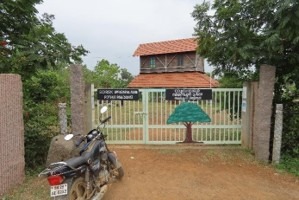
As the initiative continues, Tata Communications remains actively committed to engaging the community and expanding income-generating opportunities around the project site. Ongoing efforts include the upkeep of gardens and the lake area, cleaning and maintenance work, support for small shops, and the facilitation of educational visits and activities related to the BGC. These activities not only have the potential to sustain the ecological gains but also promote and reinforce community well-being and community engagement.
Moreover, Project Nanneer truly comes across as a multistakeholder project as the stakeholders included local communities, Tata Communications as funders, Pitchandikulam Forest for scientific expertise, government authorities for land and policy support, and volunteers for planting and awareness. This collaborative model strengthened social cohesion, economic empowerment, and environmental stewardship.
Active participation of the Tata Communications employees as volunteers during the plantation drive was also a major step towards inclusivity.
The Blue Green Center (BGC) has been acting as an environmental education hub, extending the impact of Tata Communication’s “School in Action” initiative from Chennai to the Nanneer site by engaging students, local youth, and conservation enthusiasts with indigenous biodiversity.
Challenges, Trade-offs, and Adaptive Management
The project faced technical, environmental, and socio-economic challenges. Technical hurdles included extensive excavation and ensuring water availability for plantations, addressed by installing a 2,000-liter water tank. Heavy monsoon rains required erosion control and continuous invasive species management. Socio-economic conflicts arose from farmers and fishermen concerned about disruptions in water availability for irrigation and fish breeding, resolved through dialogue and expert explanations.
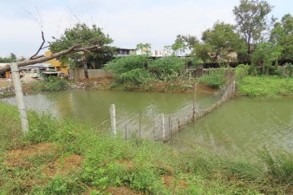
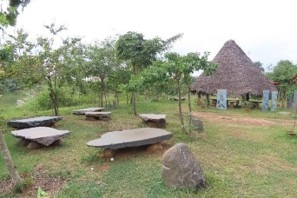
Trade-offs included potential displacement of species adapted to degraded conditions, mitigated by phased restoration and habitat enrichment. Water usage conflicts were managed by creating separate livestock drinking areas and community-based water governance. Regulated tourism policies and environmental education were potential steps towards minimizing pollution and habitat disturbance from increased public access.
Adaptive management involved regular monitoring of biodiversity, water quality, soil health, and social outcomes. Local communities were engaged in maintenance and monitoring, supported by scientific experts. This approach ensures resilience and long-term project sustainability.
Global Alignment, Lessons Learned, and Scalability
The Project Nanneer demonstrates alignment with a broad spectrum of UN Sustainable Development Goals (SDGs) – including health, education, water, work, communities, climate, and life in and on land and water – and supports key Indian national policies and plans.
- SDG 3 (Good Health and Well-being)
- SDG 4 (Quality Education)
- SDG 6 (Clean Water and Sanitation) & National Water Policy 2012
- SDG 8 (Decent Work and Economic Growth)
- SDG 11 (Sustainable Cities and Communities)
- SDG 13 (Climate Action), Paris Agreement & National Action Plan on Climate Change (NAPCC) and Tamil Nadu State Action Plan on Climate Change (TNSAPCC)
- SDG 14 (Life Below Water) & National Wetland Conservation Programme
- SDG 15 (Life on Land) & National Biodiversity Action Plan (NBAP)
- SDG 17 (Partnerships for the Goals)
- The Kunming-Montreal Global Biodiversity Framework (KM-GBF), 2022: Ecosystem restoration (Target 2), native species protection (Target 4), invasive species management (Target 6), sustainable biodiversity use (Target 9), and equitable access and community engagement (Target 22)
This alignment is commendable and positions the project within a globally and nationally recognized framework for sustainable development. Furthermore, its stated contribution to carbon sequestration, climate resilience, and biodiversity conservation, as well as its adherence to the Kunming-Montreal Global Biodiversity Framework, suggests a comprehensive approach to environmental sustainability.
While the project’s alignment with key frameworks offers a solid and commendable foundation, it also opens up exciting opportunities for deeper reflection on its real-world effectiveness and impact. As the initiative continues to evolve, it holds tremendous promise in advancing goals like carbon sequestration and climate resilience. To fully capture and showcase these contributions, it will be invaluable to support them with robust, long-term data and verification mechanisms. Such evidence-based insights not only strengthen the case for this project’s success but also play a crucial role in informing and inspiring the scaling up of similar ecosystem restoration and Ecosystem-based Adaptation (EbA) efforts elsewhere. At the same time, while the project aspires to ensure long-term community engagement, there’s a valuable opportunity to take a closer look and ensure that local power dynamics and the risk of marginalization are thoughtfully addressed.
The lessons learned from the Project Nanneer strongly affirm the power and effectiveness of a community-driven model. The active involvement of local villagers, women’s groups, and Panchayat governance has laid a strong foundation for local ownership and long-term sustainability. The project’s emphasis on nature-based solutions, participatory water management, and integration of livelihoods presents a promising approach—one that holds significant potential for wider replication. While the model shows encouraging signs of scalability, it is important to approach its replication with contextual sensitivity. Socio- economic diversity, local governance dynamics, and ecological variation must be carefully considered to ensure that adaptations are both relevant and impactful. With the right support and localized planning, the Nanneer approach can inspire transformative change in other regions facing similar challenges.
Recommendations to Enhance Ecosystem Restoration Projects:
- Use baseline data and reference models to evaluate restoration impacts.
- Implement long-term monitoring using remote sensing, GIS, and water quality tools.
- Promote eco-tourism and community-led enterprises to support sustainable livelihoods.
- Utilize MGNREGA labour and self-help groups to boost local employment, income and participation.
- Expand education through digital tools and citizen science initiatives.
- Strengthen legal protections to prevent future degradation.
Acknowledgement:
We sincerely thank Pitchandikulam Forest, Auroville, for their invaluable support in the biodiversity assessment report. We especially thank Dr. Taufique Warsi, Mr. Navnath Ghodake and Dr. Suhail Husain for their dedicated efforts in conducting the survey and collecting data. Our heartfelt thanks also go to Mr. Shanmugam Mani and Mr. Giridharan R of Pitchandikulam Forest for their assistance during data collection and interviews. We are also grateful to the researchers at W-CReS for their continuous support throughout the project.
This project was initiated and funded by

& implemented by
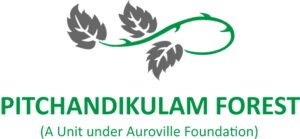
Documented by: Dr. Sharanya Chattopadhyay & Omkar Hande

